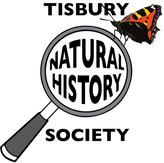|
Members of the Society have been busy on practical projects recently. Before Christmas, in the parish meadow (behind the Nadder Centre) we planted nearly 150 trees. A number of trees and shrubs were planted in 2013 in the sheltered, south-western, bottom corner of the field. These are established now and are beginning to knit together. The new planting will augment these. Species planted included oak, birch, hawthorn, willow, dogwood, buckthorn, hornbeam, beech and crab apple. This diversity of species aims to make it as valuable for wildlife as well as interesting to look at. Most of the trees were relatively small, bare-rooted plants; planted correctly, these have the best chance of rapid establishment. Each is supported with a bamboo cane and spiral guard for protection while a woodchip mulch around the base will help to suppress weeds and retain moisture. We look forward to them bursting into leaf in the spring.
We also took the opportunity to weed amongst the young hedge line between the community orchard and the skatepark, again applying mulch to help their establishment. An ongoing project is to lay the hedge which separates the parish meadow from orchard and skatepark. It will involve cutting away some of the existing growth to make the hedge line thicker and more vigorous in the long term. Laying prompts the existing shrubs in the hedge to send up new growth from the base while still growing from the remaining branches that have been laid. This prevents it getting gappy and top heavy and helps the hedge to develop the width which makes it most valuable to wildlife. In the New Year members were hard at work coppicing in Oysters Coppice Wiltshire Wildlife Trust reserve near Semley. The society will also continue to organise coppicing in the community field in years to come. When coppicing, all the small trees and bushes are cut down to the ground over a defined area. This lets sunlight in and results in a flush of flowering plants for a few years until the cut stumps have regrown and shade returns. Some of the cut material is woven into dead hedges to protect the cut stumps – or stools as they are known – and later more is placed over the stools to prevent deer browsing. Many woodlands in Britain used to be managed as coppices but as the markets for the products that they produced – e.g., hurdles, thatching spars, fence rails and posts – declined so did coppicing, to the detriment of many woods’ wildlife. by Andrew Graham Comments are closed.
|
Photo: Avocets (Izzy Fry)
The headers display photos taken by our members. Do get in touch via the Contact Form if you'd like to submit a photo for selection.
Archives
May 2024
Categories
All
|

 RSS Feed
RSS Feed